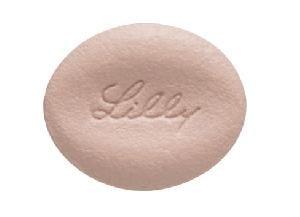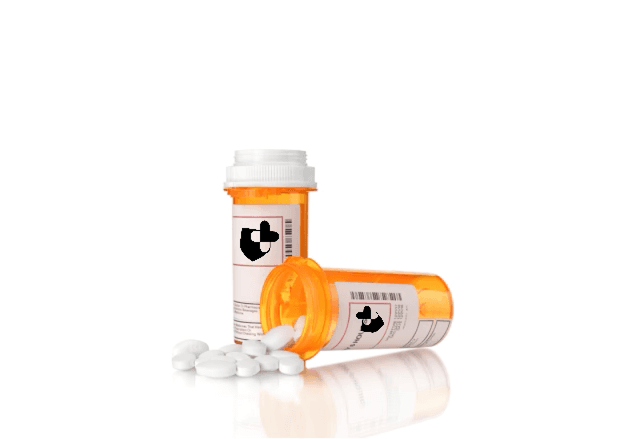Novo Nordisk Confirms FDA Submission for High-Dose Oral Wegovy (semaglutide) GLP-1 Receptor Agonist
Novo Nordisk has confirmed it has submitted a high-dose version of its oral semaglutide (currently marketed for type 2 diabetes as the brand, Rybelsus) for FDA approval as a treatment for obesity, supported by strong clinical trials data where body mass index (BMI) was used as a key measure to evaluate body weight reduction and health improvements, with many participants having at least one weight related comorbidity, such as hypertension or dyslipidemia (a metabolic disorder characterized by abnormally high or low amounts of any or all lipids or lipoproteins in the blood).
This move sets the stage for a head-to-head race between two pharmaceutical giants, Eli Lilly and Novo Nordisk, to bring the first widely available oral GLP-1 therapies for obesity to market. While both aim to serve the same growing need, their approaches differ significantly.
Eli Lilly’s oral orforglipron and Novo’s oral Wegovy each offer unique advantages and disadvantages, and depending on patient needs, one may prove more suitable than the other.
The safety and efficacy profile of oral orforglipron has been clinically evaluated in the ACHIEVE-1 study.
In this article, we will help you understand how oral Wegovy and oral orforglipron compare across four key areas:
- weight loss efficacy
- manufacturing and access
- regulatory approval
- target populations

Head to Head: Eli Lilly Oral Orforglipron and Novo Nordisk Oral Wegovy 25mg
How Oral Wegovy Works: Mechanism of Action
Oral Wegovy, the pill form of semaglutide, is a breakthrough in weight management as a GLP-1 receptor agonist. By mimicking the action of the body’s natural GLP-1 hormone, it helps regulate appetite and glucose metabolism, making it a powerful tool for those looking to reduce excess body weight and address weight-related medical problems.
The medication works by activating GLP-1 receptors in the brain, which leads to a decrease in food intake and an increase in feelings of fullness. This dual action supports significant weight loss and helps patients stick to a reduced-calorie diet. In addition, oral Wegovy slows the movement of food from the stomach to the small intestine, which not only helps control appetite but also smooths out blood sugar spikes after meals, supporting better glucose control.
Clinical trials have demonstrated that oral Wegovy can deliver statistically significant efficacy results, not only in reducing body weight but also in improving weight-related comorbidities such as type 2 diabetes and cardiovascular disease. Importantly, the medication has shown a reduction in the risk of major adverse cardiovascular events, including non-fatal myocardial infarction and cardiovascular death, making it a promising option for patients with established cardiovascular disease or those at risk.
The safety profile of oral Wegovy is consistent with other injectable GLP-1 receptor agonists. The most common side effects include nausea, vomiting, diarrhea, abdominal pain, and upset stomach. While these are generally mild to moderate, patients should be aware of more serious risks, such as the potential for thyroid tumors, including medullary thyroid carcinoma. For this reason, oral Wegovy is not recommended for individuals with a personal or family history of medullary thyroid carcinoma or those with multiple endocrine neoplasia syndrome type 2. Healthcare providers should monitor for symptoms like trouble swallowing, hoarseness, or persistent severe pain in the upper stomach.
Oral Wegovy will be available as a 25mg oral once-daily pill, and the dosing will be determined when the FDA, EMA, and MHRA authorise and license the application.
That said, like injectable Wegovy, certain populations should avoid oral Wegovy, including pregnant or breastfeeding women, due to the risk of harm to the unborn baby or exposure through breast milk. Patients with a history of severe allergic reactions, suicidal thoughts, or mental health issues should discuss these concerns with their healthcare provider before starting treatment.
As the landscape of weight loss medications evolves, oral Wegovy stands out for its weight loss potential and its ability to reduce the risk of major cardiovascular events. While orforglipron, another GLP-1 receptor agonist, has shown promising results in the ACHIEVE-1 clinical trial, ongoing research will further clarify how these options compare in terms of efficacy and safety.
Ultimately, oral Wegovy offers a new, effective option for weight management in individuals who cannot tolerate using the injectable format, thus helping a wider cohort of patients to reduce excess body weight, improve weight-related medical problems, and lower their risk of major cardiovascular events, all under the guidance of their healthcare providers.
Weight Management and Weight Loss: Comparing Outcomes
In the ACHIEVE-1 trial, orforglipron helped people with type 2 diabetes lose up to 7.9% of their body weight over 40 weeks, alongside a 1.6-point reduction in HbA1c. This is notable, as individuals with diabetes often lose less weight than those without.
Novo’s high-dose oral Wegovy, tested in the OASIS 1 trial, delivered even more dramatic results: patients taking 50 mg daily lost an average of 15.1% of their body weight over 68 weeks, with nearly 85% losing at least 5%. When weight was compared between orforglipron and oral semaglutide, clinical trial data show that oral semaglutide achieved nearly double the percentage of weight loss in a longer study period.
At this stage, orforglipron compared to oral semaglutide shows a lower percentage of weight loss, but orforglipron compared to traditional GLP1 receptor agonists may offer advantages as an oral therapy, with a favorable safety profile and dose-dependent benefits observed in clinical trials. Orforglipron’s full potential, especially in non-diabetic populations, remains to be seen.
Manufacturing and Access: Small Molecule vs. Peptide
Oral orforglipron is a small-molecule drug, which makes it easier and less expensive to manufacture, with no need for cold-chain storage. These characteristics could translate into broader access and lower costs.
Oral Wegovy is a peptide that requires a complex absorption enhancer to be effective and is more challenging to produce. Production capacity is already stretched due to high demand for injectable versions like Ozempic and Wegovy.
In terms of scalability and access, orforglipron may have a logistical advantage, even if it hits the market slightly later.
Regulatory Approval: Who’s Ahead?
Novo Nordisk is further along, having submitted oral semaglutide for FDA approval in obesity. If approved, it would become the world’s first oral GLP-1 therapy specifically indicated for weight loss.
Eli Lilly is still conducting Phase 3 trials of orforglipron in people without diabetes, with results expected mid-2025. FDA submission is likely to follow soon after, possibly at the end of 2025.
Study Populations: Who’s Being Tested?
Oral Wegovy has been tested in people with obesity or overweight individuals who also have at least one comorbidity, such as hypertension or high cholesterol, closely reflecting real-world patients.
Orforglipron, thus far, has only been evaluated in patients with type 2 diabetes. Data from trials in non-diabetic populations are expected later this year, which will offer a clearer picture of its broader effectiveness.
Implications for Patients
Both oral GLP-1 candidates represent significant progress. Oral semaglutide offers strong weight loss outcomes and is closer to market readiness. Orforglipron, while slightly behind in development, could offer better affordability and availability due to simpler manufacturing. Also, unlike oral Wegovy, it requires no restrictions on diet or on the amounts and types of liquid with which it can be taken.
Ultimately, this is not a zero-sum competition. The availability of multiple oral treatment options means more choice, better access, and renewed hope for millions struggling with obesity, especially those seeking alternatives to injections.
Medical Disclaimer
NowPatient has taken all reasonable steps to ensure that all material is factually accurate, complete, and current. However, the knowledge and experience of a qualified healthcare professional should always be sought after instead of using the information on this page. Before taking any drug, you should always speak to your doctor or another qualified healthcare provider.
The information provided here about medications is subject to change and is not meant to include all uses, precautions, warnings, directions, drug interactions, allergic reactions, or negative effects. The absence of warnings or other information for a particular medication does not imply that the medication or medication combination is appropriate for all patients or for all possible purposes.
















